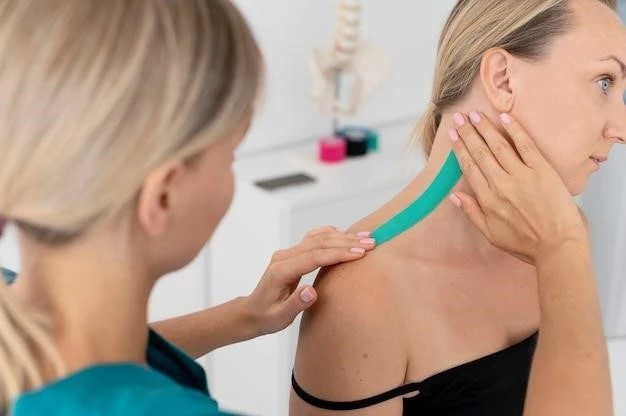Causes of Acrofacial Dysostosis
The causes of Acrofacial dysostosis include genetic mutations and environmental factors.
Genetic Mutations
Genetic mutations play a crucial role in the development of Acrofacial dysostosis‚ leading to abnormalities in facial and limb structures. These mutations affect the proper formation of tissues during early embryonic development‚ resulting in the characteristic features of this condition.
Environmental Factors
Environmental factors may also contribute to Acrofacial dysostosis‚ potentially interacting with genetic mutations to impact the development of facial and limb abnormalities. Exposure to certain substances or conditions during pregnancy could influence the manifestation of this rare disorder.
Symptoms of Nager Syndrome
Nager Syndrome presents with craniofacial abnormalities and limb anomalies as key features.
Craniofacial Abnormalities
Craniofacial abnormalities in individuals with Nager Syndrome include underdeveloped cheekbones‚ low-set ears‚ down-slanting eyelids‚ and a small lower jaw. These features contribute to distinctive facial characteristics observed in this condition.
Limb Anomalies
Limb anomalies associated with Nager Syndrome include radial aplasia or hypoplasia‚ which affects the development of the forearm bone‚ and thumb anomalies. These limb abnormalities can impact upper limb function and contribute to the clinical presentation of this syndrome.
Treatment Options for Acrofacial Dysostosis
Treatment options for Acrofacial dysostosis may involve surgical interventions and orthodontic care.
Surgical Interventions
Surgical interventions for Acrofacial dysostosis may include procedures to address craniofacial abnormalities‚ such as craniofacial reconstruction or jaw correction surgeries. These interventions aim to improve facial aesthetics and functional outcomes for individuals affected by this condition.
Orthodontic Care
Orthodontic care for Acrofacial dysostosis focuses on correcting dental misalignment and bite issues through the use of braces‚ retainers‚ or other orthodontic appliances. This approach aims to enhance oral function and improve the overall dental health of individuals with this condition.
Genetic Factors in Nager Syndrome
Genetic factors play a significant role in the development of Nager Syndrome.
Role of Genetic Mutations
The role of genetic mutations in Nager Syndrome is pivotal‚ as alterations in specific genes can lead to the characteristic craniofacial and limb abnormalities associated with this condition. Understanding these genetic changes is essential for diagnosis and potential therapeutic interventions.
Inheritance Patterns
The inheritance patterns of Nager Syndrome indicate that it can be passed down in families in an autosomal dominant or autosomal recessive manner‚ depending on the specific genetic mutations involved. Genetic counseling is crucial to assess the risk of recurrence in affected families and provide guidance on family planning.
Prognosis of Acrofacial Dysostosis
The prognosis of Acrofacial dysostosis varies and is influenced by multiple factors.
Long-Term Outlook
The long-term outlook for individuals with Acrofacial dysostosis depends on the severity of their symptoms‚ access to appropriate medical care‚ and supportive interventions. Regular monitoring and multidisciplinary management are essential for optimizing the quality of life and functional outcomes over time.
Quality of Life Considerations
Quality of life considerations for individuals with Acrofacial dysostosis encompass physical‚ emotional‚ and social aspects. Addressing functional limitations‚ providing psychological support‚ and promoting social inclusion are vital components in enhancing the overall well-being and quality of life of affected individuals.
Diagnosis of Nager Type Dysostosis
Diagnosing Nager type dysostosis involves clinical evaluation and imaging studies.
Clinical Evaluation
The clinical evaluation for Nager type dysostosis involves a comprehensive physical examination to assess craniofacial features‚ limb anomalies‚ and other associated abnormalities. This evaluation helps in identifying characteristic signs and symptoms that aid in the diagnosis of this rare condition.
Imaging Studies
Imaging studies such as X-rays‚ CT scans‚ or MRI scans are crucial in evaluating the skeletal abnormalities‚ craniofacial structures‚ and limb anomalies characteristic of Nager Syndrome. These imaging modalities provide detailed insights that aid in confirming the diagnosis and guiding the management of this condition.

Management of Nager Syndrome
The management of Nager Syndrome requires a multidisciplinary approach and supportive therapies.
Multidisciplinary Approach
The management of Nager Syndrome necessitates collaboration among specialists such as geneticists‚ craniofacial surgeons‚ orthodontists‚ speech therapists‚ and occupational therapists. This integrated approach ensures comprehensive care addressing the diverse needs of individuals with this complex condition.
Supportive Therapies
Supportive therapies for Nager Syndrome may include speech therapy‚ occupational therapy‚ and psychological support to address communication difficulties‚ enhance motor skills‚ and improve emotional well-being. These interventions play a crucial role in maximizing the quality of life and functional abilities of individuals with this rare genetic condition.
Research Advances in Acrofacial Dysostosis
There are ongoing studies exploring emerging therapeutic strategies for Acrofacial dysostosis.
Current Studies
Current research studies are investigating novel approaches to better understand the pathogenesis of Acrofacial dysostosis and develop targeted therapies. These studies aim to advance knowledge and improve outcomes for individuals affected by this rare congenital disorder.
Emerging Therapeutic Strategies
Emerging therapeutic strategies for Acrofacial dysostosis include potential gene therapies‚ precision medicine approaches‚ and targeted interventions to address specific molecular pathways involved in the etiology of this rare genetic disorder. These innovative strategies hold promise for advancing the management of Acrofacial dysostosis.
